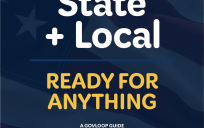I was driving my 5-year old son from baseball practice, and he was in the backseat of my car playing a game on his Ipad. About a week and a half prior, I purchased this “educational” racing game that was meant to teach a number of useful cognitive skills. Although it was meant for kids ages 9 and up, I liked it, and thought, “Hey, it grabs his attention; so I’ll let him have a go at it.”
He fumbled around with it for the first day or two, and I helped him mostly by reading aloud any instructions that were presented as a narrative onto the screen. I figured that he was going to get frustrated with trying to wrap his head around learning the complexities of the gameplay and just put it aside; and, I was fine with that. However, a week and a half later, he is not only engrossed in the game but has also excelled at the gameplay and learned certain tricks and skills that I never imagined he would be able to master.
Quite frankly I wasn’t puzzled, and my mind wasn’t blown. I have known for a while that good video games have the ability to teach the user gameplay via – yep, you guessed it – gameplay. We first saw this in one of the most iconic video games of any post-Atari 2600 generation: Nintendo’s Mario Bros. The creator of Mario Bros. and other iconic video games such as Zelda and Donkey Kong, Shigeru Miyamoto, builds games specifically so that the gameplay itself teaches you how to play and get better at the game. In this video, you can see how he built the first stages of Mario Bros. with the specific intent of teaching the player how to play the game. This is one of the many key reasons Shigeru’s games have such a following and are incredibly successful. Anyone who is interested in playing the game just has to start playing the game and they get better and better at it.
In contrast, the open data portal technology that currently exists requires at least a minimum core data analytics skillset, and even then, will require some level of additional portal training and know-how in order to do even a basic analysis. This almost ensures that a city will limit the number of people in the community who will be able to interface with and use open data. From my perspective, the challenge of open data in cities can be broken down to a basic economic law: the law of supply and demand. If a city can manage these, then they can have a very successful open data program.
Supply refers to the ability to work with city agencies to grow the supply of open data in the portal. Many agencies do this well already. It’s the demand side that has proven to be challenging. Demand refers to the ability of a city to grow the number of users who utilize the open data portal. “If we build it they will come,” is never a good open data strategy. Cities have to be deliberate in their ability to attract the typical data sciencey-type users, as well as people with all types of technical backgrounds, age and community roles. If you grow the demand for open data, you have a mechanism for engaging agencies such that they can grow the supply, which in turn will enhance the capability of the city leadership to grow the demand even further.
One organization that is getting both the supply and the demand right is the Pratt Center in New York City. The Pratt Center works to advance innovative solutions to low- and moderate-income communities’ greatest economic and environmental challenges in partnership with community-based organizations, small businesses and policymakers. One of the most powerful tools in their toolkit is the Neighborhood Data Portal (NDP) – a free online application that integrates three dozen vital datasets, democratizing access to essential planning tools like mapping and data analysis.
The Pratt Center recognizes that equal and free access to essential information about local neighborhoods is fundamental for community-based planning and policy-making that advances a just city. To help support the use of the NDP across the community-organizer spectrum in the city, the Pratt Center is hosting a training on July 26 to help educate users on the new capabilities in the latest release of the NDP. They have found that in-person training sessions are more effective for their stakeholders than a webinar or virtual training session, so they have made these trainings an annual event. Again, they built it; but rather than hoping they will come, the Pratt Center recognizes the value of smoothing the way to NDP usage through a hands-on approach.
The future of open data is about growing the user base. Taking a lesson from the creator of Mario Bros. video game can go a long way in making data portals easy to use and grow the number of people in the city who will use them. Following the laws of supply and demand is one way to get our cities to the next level of open data usage.
Amen Ra Mashariki is part of the GovLoop Featured Contributor program, where we feature articles by government voices from all across the country (and world!). To see more Featured Contributor posts, click here.





Love the lesson your son taught you here. I’ll make sure to check out the Pratt Center’s work, too.
Loved this piece, and I especially agree with Catherine on how I enjoyed the lesson from your son and video games. Hopefully lots of folks can utilize Pratt’s training today!